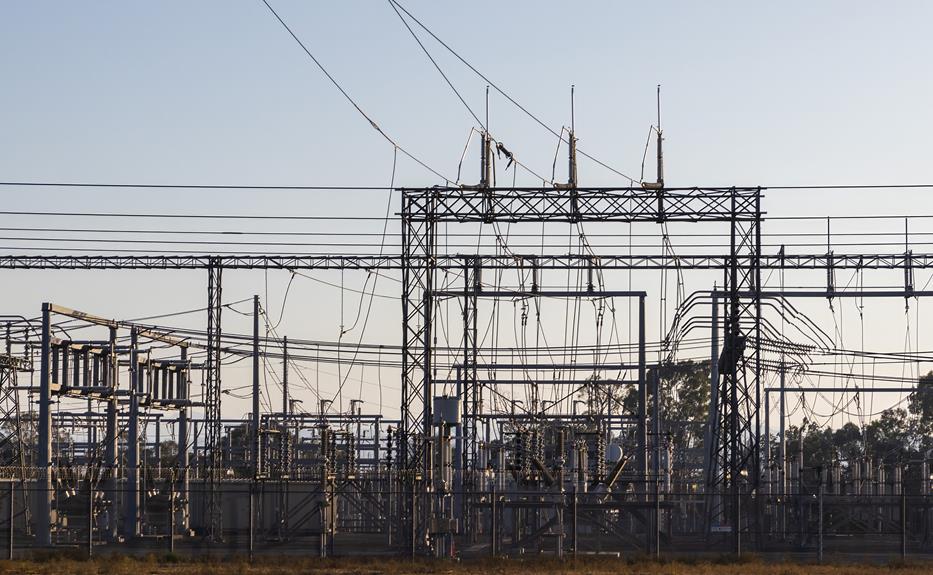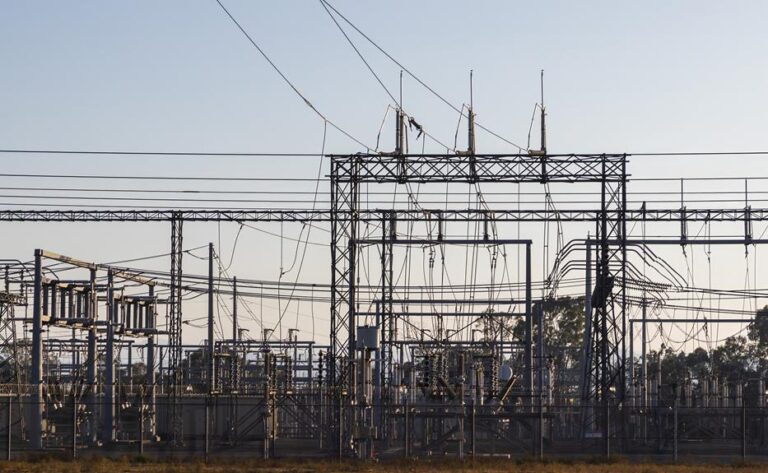Fine-Tuning Power: The Role of Performance Throttle Position Sensors
In the labyrinth of automotive engineering, the Performance Throttle Position Sensor (TPS) reigns as an unsung hero. This article delves into the TPS's pivotal role, bridging the gap between your foot's desire for speed and your engine's response. We'll explore the sensor's key features, its impact on vehicle performance, and future trends. Whether you're an auto-enthusiast or a mechanic-in-training, understanding the TPS will liberate your grasp of fine-tuning vehicle power.
Key Takeaways
- Performance throttle position sensors relay the throttle valve's position to the Engine Control Unit (ECU) and help manage the fuel system.
- Throttle position sensors significantly influence vehicle speed and overall performance, controlling factors such as fuel injection and ignition timing.
- High-quality performance throttle position sensors have robust construction, precision in signal transmission, and resistance to heat and vibration.
- Regular troubleshooting, maintenance, and professional installation and calibration are important for optimal sensor performance.
Understanding the Basics of Performance Throttle Position Sensors
In this section, we will delve into the fundamental aspects of performance throttle position sensors to enhance our understanding of their role in fine-tuning power. A performance throttle position sensor is a pivotal component of the electronic throttle controller system. Its primary function is to relay the throttle valve's position to the Engine Control Unit (ECU), which is the brain of the vehicle's fuel management system.
The sensor employs a potentiometer, a type of resistor with an adjustable voltage divider, to generate a variable signal based on the valve's position within the throttle body. This information directly influences fuel injection, ignition timing, and other vital engine functions.
A throttle body upgrade, often paired with a performance throttle position sensor, allows for increased airflow into the engine, providing a significant boost in power output. The sensor's accuracy and response rate are crucial in this process, ensuring optimal engine performance.
In essence, the performance throttle position sensor acts as a mediator, bridging the gap between the driver's input via the accelerator pedal and the engine's response. This intricate balance of power and control offers drivers the liberation they seek in a finely tuned vehicle.
The Connection Between Throttle Position Sensors and Engine Control
Both the throttle position sensor and the engine control unit are integral parts of a vehicle's operation, working in tandem to optimize power output and fuel efficiency. The throttle position sensor plays a significant role in informing the engine control unit about the current throttle position, which is crucial in controlling the mixture of air and fuel that enters the engine.
When the throttle opens, the turbocharger and supercharger work to increase the amount of air entering the engine. The throttle position sensor communicates this information to the engine control unit, which adjusts the fuel injection accordingly to maintain an optimal air-fuel ratio.
| Component | Function | Interaction with Throttle Position Sensor |
|---|---|---|
| Turbocharger | Increases the amount of air in the engine | Activated when throttle opens |
| Supercharger | Provides additional power | Activated when throttle opens |
| Engine Control Unit | Controls air-fuel mixture | Adjusts fuel injection based on sensor data |
Understanding the interplay between these components can help in fine-tuning the vehicle's power and performance. In the next section, we will delve into the key features of high-quality performance throttle position sensors.
Key Features of High-Quality Performance Throttle Position Sensors
Evaluating the durability and precision of performance throttle position sensors, as well as their compatibility with various vehicle models, forms the basis for understanding their quality. A high-quality sensor is characterized by its robust construction, designed to withstand the harsh environment within the engine compartment. This durability ensures a long lifespan, reducing the need for frequent replacements and ensuring reliable performance.
Furthermore, precision in signal transmission is critical. The sensor should provide accurate and consistent throttle position readings, ensuring that the engine control unit (ECU) receives precise information for optimal fuel-air mixture calculations. This accuracy supports efficient engine operation, which in turn reduces fuel consumption and emissions.
Compatibility is another key feature. Quality sensors are designed to work across a wide range of vehicle models and engine types, providing versatility and ease of installation.
High-quality sensors also feature protection against electromagnetic interference (EMI), which can disrupt signal transmission. This feature allows the sensor to function reliably, even in the presence of other electronic components.
Lastly, the sensor should have a high resistance to heat and vibration, as these conditions are common in the engine environment. This resistance ensures that the sensor continues to perform accurately under demanding conditions.
The Process: How Throttle Position Sensors Adjust Engine Power
Through the continuous monitoring of the throttle valve's position, Throttle Position Sensors (TPS) play a crucial role in adjusting the power output of an engine. The TPS is a type of potentiometer, offering variable resistance based on the position of the throttle valve, which it continuously tracks.
The TPS works in sync with the Engine Control Unit (ECU), providing critical data about throttle valve position. This data is used by the ECU to calculate the air-fuel mixture required for optimal combustion. In essence, the TPS is the communication bridge between the driver's input on the gas pedal and the ECU's command for fuel injection and ignition timing.
When the throttle valve is completely closed, the TPS sends a low voltage signal to the ECU. This indicates a low demand for power, such as in idle conditions. Conversely, when the throttle valve is wide open, the TPS sends a high voltage signal, indicating a high demand for power, like during rapid acceleration.
The Impact of Throttle Position Sensors on Vehicle Performance
The performance of a vehicle is significantly influenced by the function of the throttle position sensors (TPS). These sensors control key factors such as speed and fuel efficiency by monitoring and adjusting the throttle's position in real-time. A detailed analysis of this relationship will provide a deeper understanding of their role in optimizing vehicle performance.
Sensor's Effect on Speed
While throttle position sensors (TPS) might appear insignificant in the grand scheme of a vehicle's anatomy, they play a crucial role in influencing the speed and overall performance of the car. They measure throttle valve position, relaying data to the vehicle's engine control unit (ECU). This data is essential for accurate fuel injection and ignition timing, directly impacting vehicle speed.
The following table demonstrates the correlation between TPS operation and vehicle performance:
| TPS Operation | Vehicle Performance |
|---|---|
| Accurate TPS Readings | Optimal speed and fuel efficiency |
| Faulty TPS Readings | Decreased speed and increased fuel consumption |
| TPS Adjustment | Fine-tuning of speed and performance |
| TPS Replacement | Restoration of optimum vehicle speed |
Fuel Efficiency Impact
Vehicle's fuel efficiency, a critical aspect of car performance, is significantly influenced by the operational accuracy of the throttle position sensor (TPS). This sensor plays a vital role in managing the fuel-air mixture that an engine requires for optimal operation.
The impact of TPS on fuel efficiency can be summarized in four key points:
- Accurate TPS readings ensure optimal fuel consumption, preventing unnecessary waste.
- Malfunctioning sensors can lead to higher fuel consumption due to incorrect air-fuel ratio.
- Precise throttle position information enables the Engine Control Unit (ECU) to adjust fuel injection, enhancing fuel economy.
- Regular sensor maintenance helps maintain fuel efficiency, reducing overall vehicle running costs.
In essence, the TPS, by providing accurate throttle position data, is instrumental in enabling vehicles to achieve superior fuel efficiency.
Common Issues and Solutions for Throttle Position Sensors
Throttle position sensors, despite their integral role in vehicle performance, are not immune to failure. Recognizing the symptoms of sensor malfunction is crucial in maintaining optimal operation. This discussion will focus on identifying these symptoms and exploring effective troubleshooting methods to address them.
Sensor Malfunction Symptoms
In the realm of automotive maintenance, understanding the common symptoms of throttle position sensor (TPS) malfunction can be critical in diagnosing power performance issues. A faulty TPS can trigger a series of problems including:
- Sudden or erratic changes in engine speed
- Difficulty in changing gears
- Poor fuel economy
- Unusual stalling or surging of the vehicle
These manifestations indicate a TPS failing to transmit correct information to the Engine Control Unit (ECU), compromising vehicle performance. Addressing these issues promptly can prevent further complications and ensure optimal functioning of the vehicle. As we move forward, we will delve deeper into effective troubleshooting methods for TPS malfunctions.
Effective Troubleshooting Methods
Mastering the art of troubleshooting throttle position sensors involves not only identifying common issues but also implementing effective solutions. It is a process that requires a keen eye for detail and a deep understanding of the intricate system mechanisms.
| Common Issues | Potential Causes | Effective Solutions |
|---|---|---|
| Inconsistent engine performance | Faulty wiring or worn-out sensor | Replace the sensor and inspect the wiring |
| Unexpected engine stalling | Poor sensor connection | Check the connector and ensure it's securely plugged |
| High fuel consumption | Sensor misalignment | Realignment of the sensor or replacement if necessary |
Each issue is unique and requires a distinct, targeted resolution. By understanding common problems and their causes, one can devise solutions that rectify the issue while enhancing overall performance.
Upgrading Your Vehicle: The Benefits of Performance Throttle Position Sensors
One should consider the numerous benefits that arise from upgrading a vehicle with performance throttle position sensors (TPS). A performance TPS is a sophisticated device designed to monitor and relay the throttle's position to the engine control unit (ECU), thereby enhancing the overall performance and efficiency of the vehicle.
The advantages of incorporating a performance TPS into your vehicle include:
- Enhanced Fuel Efficiency: Superior TPS can optimize fuel consumption by ensuring that the ECU receives accurate data about the throttle's position, leading to better fuel-air mixture.
- Improved Throttle Response: These sensors deliver precise data, enabling the ECU to adjust the fuel injection and ignition timing more efficiently, thereby providing improved throttle response.
- Increased Engine Lifespan: By facilitating optimal engine operations and reducing excessive fuel consumption, a performance TPS can contribute to prolonging the engine's lifespan.
- Diagnostic Abilities: A modern TPS can detect and communicate potential problems, assisting in early diagnosis and preventive maintenance.
These performance upgrades, combined with the sensor's enhanced durability, make a compelling case for considering a TPS upgrade. An investment in a performance TPS can lead to long-term benefits, including cost savings, better vehicle performance, and an extended engine life.
Step-by-Step Guide: Installing a Performance Throttle Position Sensor
Embarking on the installation of a Performance Throttle Position Sensor requires a methodical approach, encompassing sensor selection, understanding the installation procedure, and troubleshooting potential sensor issues. The optimal sensor choice is paramount, as it directly influences the vehicle's performance capabilities. A comprehensive grasp of the installation procedure aids in preventing complications, while effective troubleshooting ensures a seamless adjustment and integration, thus boosting the overall performance of the vehicle.
Sensor Selection
Where should you begin when it comes to selecting and installing a performance throttle position sensor for your vehicle? Your first step should be a careful selection process, underpinned by knowledge of your specific vehicle type and its compatibility with available sensors. Consider the following:
- Identify your vehicle's make, model, and year.
- Research compatible sensors based on your vehicle's details.
- Compare the benefits and limitations of each sensor.
- Consult professional reviews and user feedback.
These steps ensure you choose a sensor that will optimally interact with your vehicle's throttle body, enhancing performance, fuel economy, and driving experience. Understanding sensor selection paves the way for a successful installation, which we will explore in the subsequent section.
Installation Procedure
The following seven steps provide a comprehensive guide to installing a performance throttle position sensor in your vehicle.
- First, disconnect the negative battery cable for safety.
- Locate the throttle body and remove the existing throttle position sensor, usually attached by two screws.
- Examine the new sensor and ensure it's compatible with your vehicle's make and model.
- Align the sensor with the throttle body, paying attention to the position of the mounting holes.
- Secure the sensor using the provided screws. Don't over-tighten; it may damage the sensor.
- Reconnect the wiring harness to the sensor. Ensure the connection is firm and secure.
- Lastly, reconnect the battery and start the engine to test the new sensor.
Following these steps will ensure a successful installation, optimizing your vehicle's performance and fuel efficiency.
Troubleshooting Sensor Issues
Several potential issues can arise when installing a performance throttle position sensor, and understanding these challenges is crucial for successful troubleshooting. The process is technical, requiring precision and a keen eye for detail.
To facilitate this task, here is a step-by-step guide for troubleshooting common issues:
- Misalignment: Ensure the sensor is correctly aligned with the throttle shaft. Incorrect alignment can lead to erratic sensor readings.
- Faulty Wiring: Check the wiring for any wear, tear, or disconnections. Damaged wires can cause inconsistent signals.
- Incorrect Calibration: The sensor should be calibrated as per the manufacturer's instructions. Improper calibration can create performance issues.
- Defective Sensor: Test the sensor's functionality before installation. A faulty sensor can lead to inaccurate throttle positioning data.
Always approach troubleshooting analytically, focusing on precision and accuracy.
Maintenance Tips for Your Throttle Position Sensor
To ensure optimal performance and longevity of your throttle position sensor, five key maintenance steps should be routinely performed. These procedures are integral to the sensor's operation and the overall efficiency of your vehicle.
| Maintenance Procedure | Description |
|---|---|
| Regular Inspection | Check for any visible damages or wear on the sensor and its connections. |
| Clean Connector Pins | Clean the sensor's connector pins regularly to prevent corrosion or dirt build-up. |
| Check Voltage | Regular voltage checks will ensure the sensor is operating within its specified range. |
| Replace Damaged Components | If any part of the sensor is faulty, replace it immediately to avoid further damage. |
| Professional Servicing | Regular professional servicing can help identify and rectify issues early. |
Adhering to these maintenance tips can significantly enhance the lifespan of your throttle position sensor, thereby contributing to the vehicle's overall performance. It is important to note that these procedures are not exhaustive and additional measures may be necessary depending on your specific vehicle model and use.
Having discussed the vital maintenance practices, our attention now shifts to the subsequent section about future trends in throttle position sensor technology, where we explore the exciting advancements on the horizon.
Future Trends in Throttle Position Sensor Technology
Nearly all modern vehicles rely on throttle position sensors, and with the rapid pace of technological advancement, we can expect both the demand and the capabilities of these sensors to significantly increase in the near future.
As we move forward, several key trends are likely to shape the future of throttle position sensor technology. These include:
- Increased Integration: Sensor technology will likely become more integrated with other vehicle systems. This will lead to more efficient data sharing and improved performance.
- Advanced Materials: The development of new, advanced materials could lead to sensors that are more durable, reliable, and efficient.
- Smart Sensors: The use of artificial intelligence and machine learning in sensor technology could lead to smarter, more responsive sensors.
- Improved Accuracy: As technology improves, we can expect throttle position sensors to become even more accurate, leading to better vehicle performance and fuel efficiency.
These advancements hold the promise of significantly improving vehicle performance, while at the same time reducing the environmental impact of transportation. However, they also pose challenges, as the automotive industry will need to adapt to these new technologies and the higher level of complexity they bring.
Frequently Asked Questions
What Is the Average Cost of a Performance Throttle Position Sensor?
The average cost of a performance throttle position sensor varies depending on the model and manufacturer, typically ranging from $20 to $100. This component's price reflects its critical role in regulating engine performance.
Can a Faulty Throttle Position Sensor Cause Damage to Other Parts of the Vehicle?
Ironically, a faulty throttle position sensor can indeed cause harm to other vehicle parts. It can lead to irregular engine performance, causing undue stress on components like the transmission and fuel injection system.
How Do Throttle Position Sensors Compare in Gas Powered Vehicles Versus Electric Vehicles?
Throttle position sensors in gas-powered vehicles relay information about pedal position to adjust fuel injection. In contrast, electric vehicles use such sensors to manage power distribution, optimizing both battery usage and vehicle performance.
Do All Vehicles Come Equipped With a Throttle Position Sensor, or Is It an Added Feature?
Throttle position sensors are standard in vehicles with internal combustion engines for fuel management. However, they are not present in all-electric vehicles as these use a different mechanism for regulating power output.
Can a Performance Throttle Position Sensor Improve Fuel Efficiency?
Indeed, a performance throttle position sensor can enhance fuel efficiency. As the adage goes, "every drop counts", this device optimizes fuel usage by fine-tuning the throttle's position, resulting in more efficient combustion.
Conclusion
In conclusion, the integration and optimization of performance throttle position sensors stand as a pivotal component in the evolution of automotive technology. These sensors not only augment the vehicle's performance but also enhance fuel efficiency. As advancements continue in this domain, anticipations run high for more refined sensors, generating an unprecedented level of precision and control. The throttle position sensor, hence, is more than a mere device; it's a crucial catalyst in the fine-tuning of automotive power.







